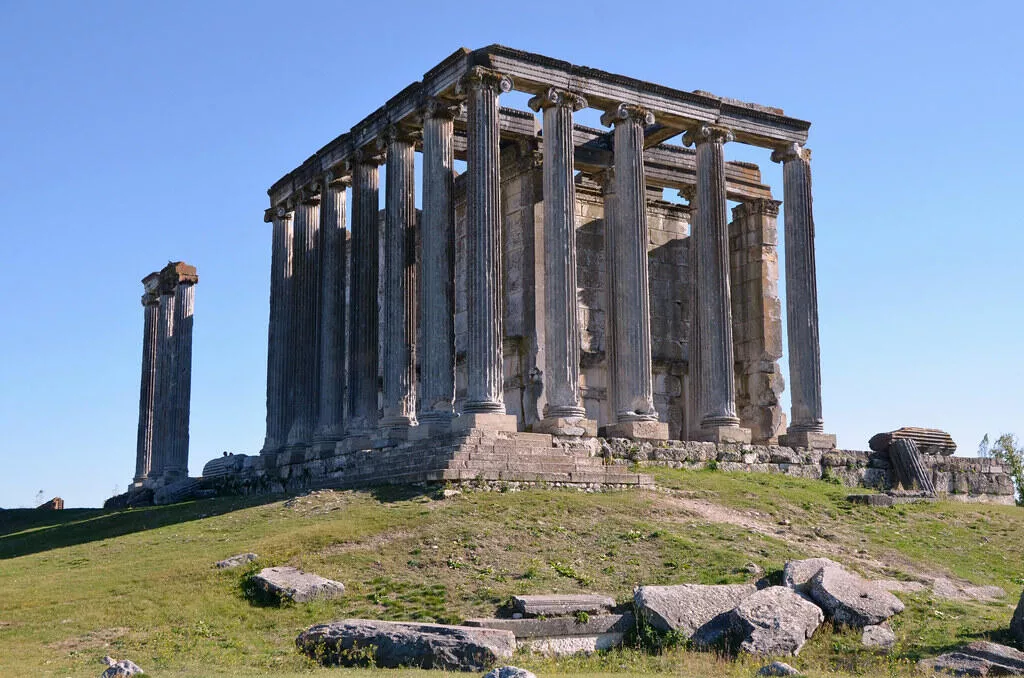A marble sundial was found during the excavations in the ancient city of Aizanoi, which is described as the “Second Ephesus” in the Çavdarhisar district of Kütahya.
Excavations in the ancient city of Aizanoi, where the best preserved Zeus Temple in Anatolia is located and included in the UNESCO World Heritage Tentative List in 2012, has been continued by Kütahya Dumlupınar University (DPU) since 17 August this year, by the decision of the Presidency.
Among the ruins, a theater with a capacity of 15 thousand people and a stadium with a capacity of 13 thousand 500 people adjacent to the theater, two baths, the world’s first commercial stock exchange building, a columned street, two agoras, gymnasium, Meter Steunene sanctuary, necropolises, an ancient dam, waterways, gate structures exists. Besides, there are five bridges over Koca Çay, two of which are still standing. The ancient city of Aizanoi is contemporary with cities such as Ephesus, Bergama and Side.
Head of Excavation Prof. Dr. Gökhan Coşkun told AA that the excavations that started last month, with the support of the Kütahya Governor’s Office, continue with 80 workers, 20 technical personnel and academicians in the Koca Çay (river bed), the agora (bazaar) and the theater.
As part of the Penkalas Project, excavations are mainly carried out in the Koca Çay river bed. “As a result of the excavations we made here, we came across many ruined architectural blocks belonging to the bridge. Most of them are parapet/railing stones of the bridge. However, we also encountered finds that surprised us in the wreckage of these architectural remains in the area where the bridge is located.” he said.



Marble fragments belonging to various sizes of statues have been found in the river bed since last year. And in the new season, a marble sundial was found for the first time in Aizanoi.
“What got us most excited during the excavations we made in the river bed this season was the marble sundial we found here. This is the first Roman sundial ever found in Aizanoi. Almost whole, only a few small pieces are missing. Apart from that, it is very well preserved with its writings and shapes. The sundial made of marble is 45 centimeters high and 43 centimeters wide. The sundial, which we dated to the Roman period, is about 2,000 years ago.”
“Investigations and restoration on the sundial continue, people could learn the time and seasons with the sundial at that time.”
It was used to determine the times of the day in times when mechanical clocks were not yet available. And in ancient times, sundials were placed in areas where the population was concentrated. “Just as clock towers are in city centers and squares today, sundials in ancient times were used in public places such as agora, city center or temple areas, where they could be seen by the public.” he said.
